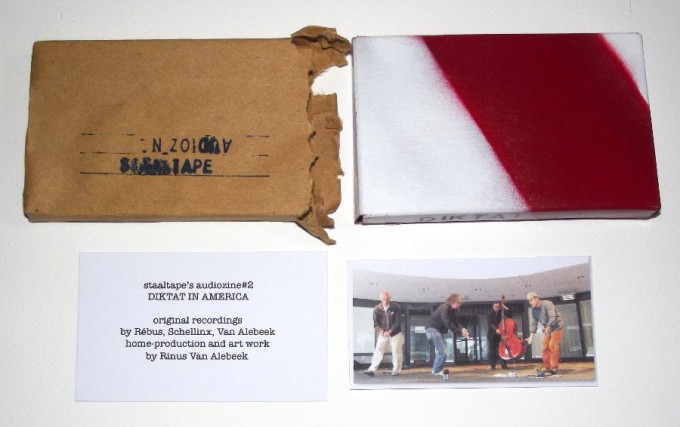A more thematic approach can be found on the compilation ‘Kantoor’, which is the Dutch word for office. I am not sure how that is related to the theme, but the four artists here all work with found tapes and it works out quite differently. When the cassette was first developed, in the early sixties, it was not to
record LPs and in that process kill the music industry, but more for audio letters or recording one’s doodles at the organ and other homely activities. The people of this cassette actively seek out where to get these old tapes (thrift stores, flea markets and on the street and use them for their musical work. Jeroen Diepenmaat, for instance, crafted a great radio-play like piece (all pieces are about twenty-two minutes) of spoken word, music, and conversations taped by accident along with some religious chanting. Some of it is in Dutch; so knowing the language works in one’s advantage. Wassily Bosch concentrates entirely on a bunch of tapes from Russia, so there is some language barrier there and it takes less the format of a collage, fading from one bit to the next, but more a documentary. The excellent booklet tells us the story (for Diepenmaat actually translations!) of all pieces. Ezio Piermanttei does the same with tapes found in Italy, but somehow it seems that most of them are played too fast, which gives it an occasional (yet unintentional?) effect. Ben Roberts is the last one and he has just one long tape, a recording of a conference by a Kreuzberg church from 1974 and we hear the voice of Mr Janani Luwum, the archbishop of Uganda’s Anglican church (under Idi Amin), speaking about immigration and displacement. He was critical of Amin and died in 1977 in a car crash (actually on February 17, the day I’m writing this in 2019 – odd little coincidence). His words about immigration still make sense. This you have to hear for yourself. Three more or less different approaches to the world of found tapes, and four times fascinating stuff to hear. (FdW)
You can order your copy here







